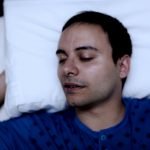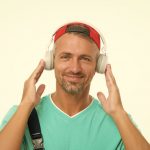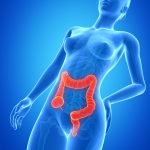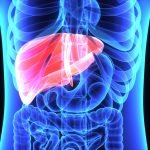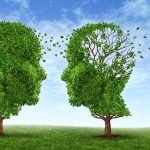A Lascivious Tale: An Adult ADD Case Study
Andrew J. Kaufmann, ND
Naturopathic Perspective
A Lascivious Tale: An Adult ADD Case Study
Martin is a 40-year-old man who presented to my office in June of 2014. His chief complaints include poor concentration, memory, anxiety, depression, and longstanding attention deficit disorder (ADD). He has been experiencing all of this for the past 25-30 years, in varying degrees of intensity. Every known antidepressant drug had been tried in the past. Fortunately, none are in use now. Martin also complains of erectile dysfunction and insomnia. Allergies return annually, during the spring. In terms of past medical history, he reports prior methamphetamine, marijuana, alcohol, and tobacco use; annual recurrent genital herpes; a malignant melanoma removed from the back a few years ago; a recent inguinal hernia repair; and 2 thrombi of unknown cause, which were removed from the left thigh last year. While overseas in 1989, he developed a staph infection, which lasted 1 year and produced boils on both arms, legs, and buttocks.
The Case
Martin has been unemployed since early 2013. In 2010 he planned to drown himself, but never actually made the attempt. Longstanding psychotherapy was recently terminated. His depression stems mainly from feeling unaccomplished as a writer, which he feels is directly related to ADD and his brother’s untimely death from a drug overdose. Marijuana use was reportedly discontinued the day before the initial visit. Tobacco is still being used, and alcohol consumption is limited to an occasional beer.
A suicide watch went into effect shortly after being incarcerated for arson in 2001, which was triggered by infidelity problems with his former wife. Following this, he felt a deep sense of anger and resentment towards his former wife, children, and parents. While growing up, Martin, 2 other siblings, and his mother experienced physical and mental abuse by his father. In grade school he was molested by another student. Martin is very spiritual, and says he has forgiven everyone in his past who caused him harm. He feels a strong sexual appetite with his present wife. However, erectile dysfunction is common, resulting in marijuana use for relaxation. Restlessness causes pressure in the chest, labored breathing, and abdominal “turmoil.”
Martin dreads getting up in the morning, and will often sleep until 9:00 AM because of insomnia. Concentration difficulties started in grade school; wandering off-topic is common. A notebook must be carried around for jotting down reminders, due to poor short-term memory for names and dates, which are forgotten in minutes. Concentration is especially poor when writing, such as creating a new scene for a character in the story he is writing. In-depth research will produce anxiety, fidgetiness, and shortness of breath. He is easily distracted by an attractive woman, due to an obsession with pornography. “I have to fight to get rid of the thoughts and am more vulnerable to pornography when I am home alone.” Masturbation is excessive, occurring up to 10 times daily. Ineffectual urging of stool is caused by self-anal play, which is described as an escape mechanism along with frequent masturbation. Past anal sex encounters were discontinued a few years ago due to fear of AIDS.
Smoking marijuana causes significant stomach bloating. Martin states “my abdomen feels very weak all the time, like it is going to drop down… I get this stormy feeling in my belly/stomach, and feel the stress in my shoulders and neck. The cramping pain is especially bad in the lower back, thighs, calves and knees.”
Martin adds that he will be seeing a podiatrist due to severe pain on the heels of both feet, especially when rising in the morning. Walking around ameliorates the pain a little, but it is always there. He describes the painful feeling as “like walking on sharp rocks.” The bones on the top of both feet are also painful.
Just before he leaves, I ask him what “being well” would look and feel like to him. He replies, “I would have an organized day. There is no organization mentally – every day feels like chaos to me, as I am going in a million different directions. If I had organization in my life, I would accomplish a lot more. I would wake up feeling excited about life, want to jump in feeling invigorated to be alive, being active and happily involved in everything… Life is a gift.”
Martin requests temporary disability status, but I suggest that we wait and see how the treatment plan progresses before submitting a request to Child Support Services. I advise him to return in 1 week for his homeopathic prescription, so that I can study the case intensively. “At that visit,” I explained, “I will clarify any areas of uncertainty, discuss the remedy chosen, explain dosing procedures, and provide a written treatment plan.”
Repertorization and Remedy Selection
The essence of this case seemed to revolve around sexual excess, anxiety, lack of concentration, and abdominal turmoil. Staphysagria seemed to be very well-indicated (see Figure 1). The genius of the case is reflected in the rubrics chosen, but there are certainly others which could have been selected. The minimum syndrome of maximum value required a few more rubrics than I would normally use. Lycopodium, Nux vomica, Phosphorous, and Cina were all considered, but none contained memory or abdominal weakness. This symptom is – without question – strange, rare and peculiar, and isn’t that what Hahnemann said we should be looking for?
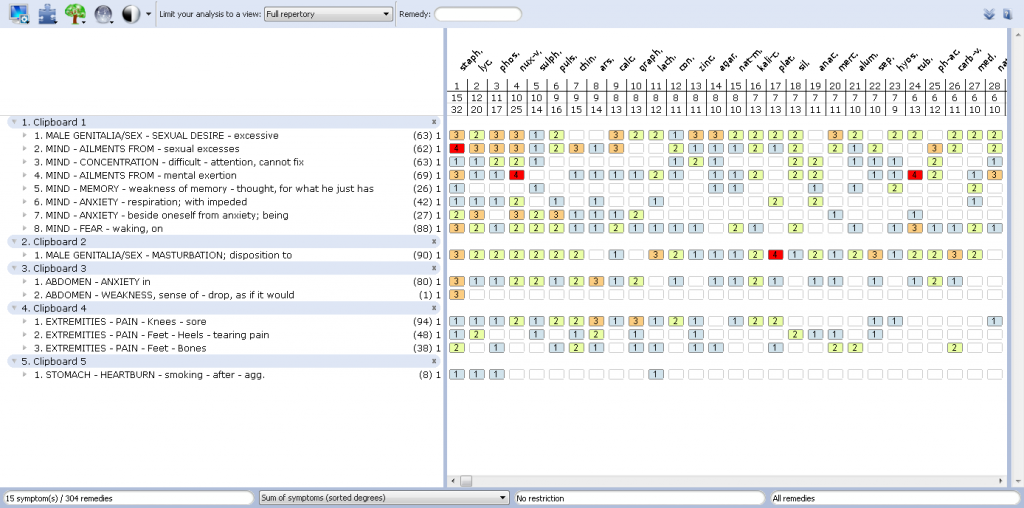
We begin with a 30C potency of Staphysagria, since I was unsure of the patient’s sensitivity and wanted to avoid an aggravation, especially given the driving distance to the office. Three pellets diluted in a tsp of filtered spring water were administered at the office. Dissolving the pellets in water increases the contact surface area in the mouth, thereby minimizing an aggravation, especially when the same potency is repeated. Instructions are given to not repeat the medicine until we talk, and a request is made to keep a journal of all symptoms. When Martin returned for the remedy, he reported that the podiatrist had diagnosed him with plantar fasciitis and that he had received an injection of something in both feet, perhaps prolotherapy, which provided minimal relief.
Follow-ups
One day later: The next day, Martin drops by the office and states that about 1 hour after that first in-office dose of Staphysagria 30C, he felt a squeezing pressure in the back of the head (pointing to the occiput area). The last time he felt this sensation was about a week ago, when he last smoked marijuana. This symptom was not revealed during the initial intake but is mentioned in the Synthesis Repertory. His right heel pain was almost completely gone upon rising today; he felt some residual left heel pain but no need to limp. He reported a feeling of happiness and wanting to laugh for no apparent reason.
Against my direction, a second dose of the remedy was taken this morning before coming to the office. More is not necessarily better when it comes to homeopathy, and I explain that an aggravation is possible if additional doses are taken that are not needed. I advise him to discontinue the remedy after this second dose, so as to observe the reaction. Martin then heads off on a 3-day road trip.
Phone call 3 days later: Martin calls after his road trip to report that he did not like the way he felt when not taking the remedy; consequently, he’d started taking a daily dose, due to feeling grumpy, fatigued, and groggy. The anxiety is “shrinking” daily, and a feeling of calmness is prevailing. The “storminess” in his belly/stomach area – the center of most of the anxiety – has diminished considerably. I agree with his approach to dose daily, and an in-office follow-up visit is scheduled in 10 days. This was a good first report, as all indications point to selection of the correct remedy. I encourage Martin to continue with psychotherapy, but this is met with some resistance, despite explaining that counseling is crucial to the success of his treatment. After all, didn’t Hahnemann say that all hygienic factors must be considered?
Ten days later: Martin’s foot pain has lessened, and the anxiety continues to decrease a little more each day. This has resulted in an increased feeling of calmness and level-headedness, even in stressful circumstances. Random churning and chaotic feelings still occur in the abdomen, but not constantly like before. ADD is decreasing, as revealed by an ability to focus longer while reading and studying. Short-term memory has improved, but he still must write down reminders. Feelings of depression have subsided considerably. The urge to masturbate has noticeably diminished, and only one anal penetration incident occurred a few days after the first dose. Thinking of pornography to maintain an erection during intercourse is no longer needed. The disappearance of heartburn after smoking was inconclusive, as marijuana abstention could not be verified. With most symptoms noticeably improving, it seemed like the right time to discontinue the remedy.
Two weeks later: It appears that anxiety, stress, the internal chaos in the belly, and the desire to masturbate are all coming back. As a result, the daily doses are resumed.
Two weeks later: It appears that some of Martin’s original presenting symptoms are unchanged, and some are regressing. Staphysagria still covers the case, but it seems as though forward progress has stalled. A single dose of Staphysagria 200C, 3 pellets diluted in water, is prescribed.
One week later: A feeling of calmness has returned. Focused reading and intense studying have improved. There have been no “over sexual feelings” and no aggravations. The dose will not be repeated at this time.
Ten days later: Martin reports varying degrees of anxiety, depression, and lack of motivation during the past week. Nail-biting started about 3 days ago (an old habit not previously revealed). Anxiety in the abdomen is now random. The dreadful feeling of getting up in the morning is sometimes present, but not every day. There is no anger now, just some mild moodiness. Although tempted, he reports no marijuana use. Bilateral foot pain comes and goes, even with the prescribed orthotics. Sleep is sound throughout the night. Four successive daily doses of 200C, 3 pellets diluted in 1 tsp of water, are prescribed.
Four days later: It seems that the previous dosing recommendation was a mistake. Depression and anxiety have increased, along with headaches and some minor pain in the chest, around the sternum. Martin states, “Things were much better when taking daily doses of the 30C potency.” This appears to be an aggravation, but not severe enough to warrant an antidote. I decide to wait it out…
One week later: “A little anxiety here and there” is reported, but a relaxed, calm feeling prevails most of the time. There are no struggles with depression or moodiness. Left foot heel pain is improving, and the right foot pain is minimal. Once again, a recommendation is made to continue psychotherapy, and once again this idea is dismissed.
Four weeks later: Martin reports a slow onset of all the original symptoms over the past 2 weeks. He is deeply frustrated, and has started smoking cigars. Martin states, “It’s time to take the medicine [remedy] again.” Staphysagria still covers the case, so a single dose of 1 pellet, 1 time, diluted in a tsp of water is prescribed. I advise him to call the clinic immediately and not to wait 2 weeks if the symptom picture changes.
Two weeks later: “Everything is going good; all symptoms are better!” One week after taking a single pellet, Martin started taking 1 pellet daily because he loved the way he was feeling. Nail-biting is much better, mood swings are vastly improved, masturbation has decreased to only once in awhile, and anxiety appears completely healed. Memory and concentration are good, and he is much better organized in daily affairs. The heel pain is greatly improved, though he is not sure if this is due to daily use of orthotics or the remedy. Overall, the abdominal chaos and feeling of weakness are gone. Hip, thigh, and knee pain are resolved. Smoking of cigars and marijuana has ceased. An occasional glass of wine or beer is consumed. “ADD has improved incredibly” since taking the last dose.
Since our last conversation, Martin has become gainfully employed, which has enabled him to meet child-support obligations. I advise to discontinue the remedy, as all original presenting symptoms have significantly improved, especially the abdominal weakness and masturbation. Martin states that he will call the clinic in 3 weeks with a status update.
Three weeks later: Our office receives a phone message from Martin, who declares, “Everything is fantastic! I consider myself cured! I do not need any more medication [Staphysagria]. ADD is totally under control. The really good news is that I am very excited about my new job and I am getting ready to publish my first book with an editor who was referred to me by a friend. Wow! Maybe I’ll check back with you in about 3 months.” I am cautiously optimistic; only 3 months have elapsed since the last dose, so this is still a work in progress. As for the seasonal allergies, we will have to wait until spring to assess those symptoms.
Reflections
One of the most difficult things for me to learn as a homeopath is to wait. If a carefully, well-chosen remedy has been selected and you are not sure if a reaction has run its course, just wait… unless, of course, there is a severe aggravation. The answer will usually be revealed with time. Also, the totality of symptoms must be covered by the remedy, but the genius of the case is usually a subset of that totality. The initial repertorization contained quite a few more rubrics than shown here, but was only used as an overall “checklist” when the patient returns. The genius of the case is reflected in the analysis. Covering the entire case with the least amount of carefully selected rubrics will result in a minimum syndrome of maximum value. There is nothing quite like classical homeopathy, and we have Hahnemann to thank for that!
 Andrew J. Kaufmann, ND, received his doctorate in naturopathic medicine in 2003 from SCNM in Tempe, AZ. Dr Kaufmann was part of a naturopathic group at Scottsdale Natural Medicine and Healing Clinic before relocating in 2004 to San Carlos, AZ, to become the medical director for the San Carlos Apache Tribe Diabetes Prevention Program. In addition, he served as interim Community Outreach and Education manager and project coordinator for the Special Diabetes Program for Indians – a federally funded community-directed grant. In 2011, he founded Tree of Life Natural Medicine with his wife Sandra – a clinic focusing on naturopathic mental health. Dr Kaufmann is board-licensed in family medicine by the Arizona Naturopathic Physicians Medical Board. Memberships include the AANP, ANMA, Homeopathic Academy of Naturopathic Physicians, and the National Center for Homeopathy. He is past vice-president of SCNM Alumni Association, and currently serves on the advisory board for Naturopathic Economics, LLC.
Andrew J. Kaufmann, ND, received his doctorate in naturopathic medicine in 2003 from SCNM in Tempe, AZ. Dr Kaufmann was part of a naturopathic group at Scottsdale Natural Medicine and Healing Clinic before relocating in 2004 to San Carlos, AZ, to become the medical director for the San Carlos Apache Tribe Diabetes Prevention Program. In addition, he served as interim Community Outreach and Education manager and project coordinator for the Special Diabetes Program for Indians – a federally funded community-directed grant. In 2011, he founded Tree of Life Natural Medicine with his wife Sandra – a clinic focusing on naturopathic mental health. Dr Kaufmann is board-licensed in family medicine by the Arizona Naturopathic Physicians Medical Board. Memberships include the AANP, ANMA, Homeopathic Academy of Naturopathic Physicians, and the National Center for Homeopathy. He is past vice-president of SCNM Alumni Association, and currently serves on the advisory board for Naturopathic Economics, LLC.
http://buywithoutprescriptionrxonline.com/strattera.html
http://rxbuywithoutprescriptiononline.net/zovirax.html




